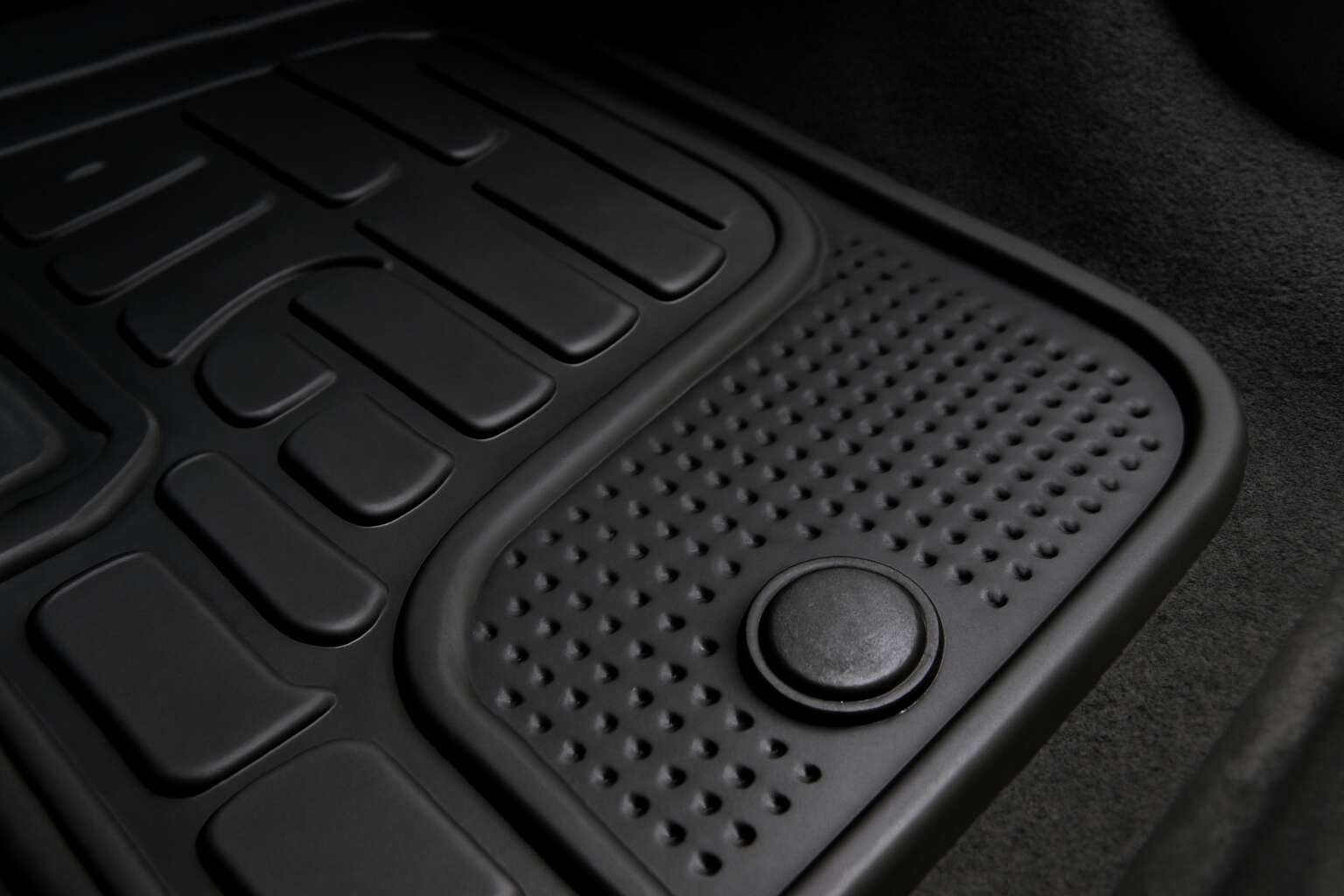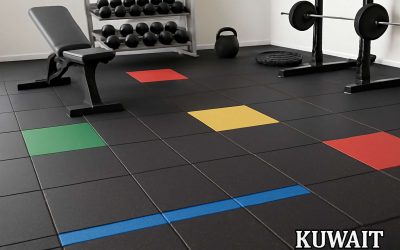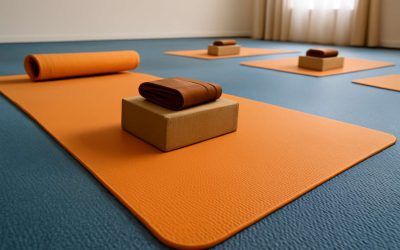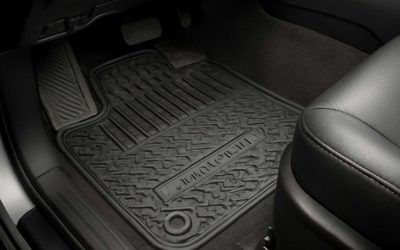Understanding the Causes of Rubber Floor Mat Slipping
Friction and Surface Compatibility – How surface textures impact mat grip
Friction and surface compatibility play pivotal roles in determining how to keep rubber floor mats from sliding, especially on the often unpredictable terrains of South Africa. The texture of the floor beneath your mats can either act as an anchor or a slippery slope. Smooth, polished surfaces like tiles or sealed concrete might seem ideal, but they often lack the grip necessary to prevent movement, turning your mats into unwelcome rodeo rides!
Conversely, rougher surfaces with a textured finish provide better traction, making them ideal for maintaining mat stability. When selecting rubber floor mats, understanding the surface textures—whether it’s matte, grooved, or embossed—can significantly influence grip. For example, mats with a deep tread pattern tend to grip more securely on uneven or porous surfaces, thwarting any attempts at sliding. Remember, the key to mastering how to keep rubber floor mats from sliding lies in matching the mat’s surface texture with the flooring beneath.
Material Quality and Wear – The role of rubber quality and aging in slipping
Rubber floor mats are a practical necessity, but their effectiveness hinges on the quality of the material. Over time, even the sturdiest mats can become a slipping hazard if their rubber begins to degrade. When rubber ages, it loses its elasticity and grip, transforming from a dependable barrier into a slick surface that invites accidents. This process is accelerated by exposure to sunlight, moisture, and harsh cleaning agents common in South Africa’s diverse climate.
Worn-out rubber mats often exhibit cracks, hardening, or a glossy sheen that signals diminishing friction. These signs are subtle but crucial in understanding how to keep rubber floor mats from sliding. The deterioration not only compromises safety but also shortens the lifespan of your mats, making replacement or refurbishment essential. Regular inspection and early intervention can prevent hazards and maintain the integrity of your flooring setup.
In some cases, choosing higher-quality rubber mats with superior wear resistance can be a game-changer. Look for mats made with dense, durable rubber compounds designed to withstand heavy use and environmental stressors. Remember, investing in resilient material isn’t just about longevity—it’s about ensuring your mats stay firmly in place, no matter the terrain or weather conditions. Keeping an eye on rubber quality and wear is fundamental in mastering how to keep rubber floor mats from sliding effectively and safely.
Environmental Factors – Moisture, dirt, and temperature effects
Understanding the environmental factors that influence how to keep rubber floor mats from sliding is crucial, especially in South Africa’s diverse climate. Moisture, dirt, and temperature fluctuations can significantly impact a mat’s grip and stability. Excessive moisture from rain or humidity can create a slick surface on the rubber, reducing friction and causing mats to slide unexpectedly. Similarly, dirt and debris act as a slippery layer, especially if they are not regularly cleaned away, turning your sturdy mats into hazards rather than safety features.
Temperature plays a subtle yet powerful role. Extreme heat can cause rubber to soften and become glossy, decreasing its ability to grip the surface beneath it. Conversely, cold weather can make rubber brittle and prone to cracking, which also affects how to keep rubber floor mats from sliding. Investing in high-quality rubber mats designed to withstand temperature variations is a smart move. Additionally, regular maintenance—such as sweeping, cleaning, and inspecting for signs of wear—can help mitigate these environmental effects and ensure your mats stay firmly in place amidst South Africa’s ever-changing weather.
Preparing Rubber Floor Mats for Better Grip
Cleaning and Maintenance – Importance of clean surfaces for optimal traction
In the dance of safety and practicality, understanding how to keep rubber floor mats from sliding begins with a commitment to cleanliness. Dirt, dust, and debris act like tiny lubricants, sabotaging the grip of even the most high-quality mats. Regularly cleaning your rubber mats isn’t just about appearance—it’s about maintaining that crucial traction that keeps everyone safe. A simple wipe-down with a damp cloth or a gentle scrub with mild soap can restore surface roughness, encouraging better grip and reducing slip hazards. After all, a clean surface provides the friction needed to keep your mats firmly in place, transforming a potential hazard into a reliable safety feature.
For those seeking an extra level of security, consider incorporating non-slip accessories or treatments. Applying a rubber-safe adhesive or anti-slip spray can enhance grip without damaging the material. When preparing rubber floor mats, it’s also wise to examine the surface for any stubborn residues that might inhibit friction. These should be thoroughly removed, ensuring the entire underside and top surface are pristine. By prioritizing meticulous cleaning and maintenance, you take a significant step toward mastering how to keep rubber floor mats from sliding—because safety isn’t just about equipment, but how well it’s cared for and prepared for everyday wear.
Drying Techniques – Ensuring mats are dry before placement
In the quest to master how to keep rubber floor mats from sliding, one often overlooked detail is the importance of proper drying techniques. A damp mat, no matter how robust its rubber composition, is an open invitation for slip hazards. It’s astonishing how many underestimate the power of a simple dry surface in enhancing grip and safety. Before placing your rubber floor mats, take a moment to ensure they are thoroughly dried—this isn’t just about aesthetics, but about securing their steadfastness.
To achieve this, use a clean towel or allow ample air drying time in a well-ventilated space. If time permits, a gentle heat source or sunlight can expedite the process, but be cautious not to overexpose the rubber, which may accelerate wear. For those eager to elevate their safety measures, consider employing a non-slip spray or an anti-slip treatment designed specifically for rubber surfaces. These solutions, when applied to dry mats, can significantly reduce the risk of sliding and prolong the lifespan of your mats, making your space safer and more resilient.
Removing Debris and Dirt – Steps to clear dust and particles
In the dance of safety and practicality, understanding how to keep rubber floor mats from sliding begins with the foundation—removing debris and dirt that sabotage grip. Over time, dust particles and tiny fragments settle deep into the textured surfaces of rubber mats, transforming them into slick, unstable surfaces. A careful, deliberate cleaning process can restore their natural tackiness, ensuring a steadfast footing for all who step on them.
Start by sweeping or vacuuming the mats to lift loose dirt. Follow this with a damp cloth or gentle scrub using mild soap and water. For stubborn grime, a soft-bristled brush can dislodge embedded particles without damaging the rubber. Remember, cleanliness isn’t merely aesthetic; it’s a vital step in maintaining the integrity of your mats’ grip. When mats are free of debris, they are far less likely to slide or shift unexpectedly—an essential consideration in high-traffic areas where safety cannot be compromised.
- Thoroughly clear the surface of all visible dirt and dust.
- Use a damp cloth or gentle cleaning solution to wipe down the entire mat.
- Allow the mat to dry completely before placement to prevent slipping.
In the pursuit of stability, every detail matters—because when you master the art of keeping rubber floor mats from sliding, you create a safer, more resilient environment that withstands the test of time and traffic. Cleanliness, after all, is the silent guardian of grip, transforming ordinary rubber into an unwavering barrier against slip hazards.
Effective Solutions to Prevent Sliding
Using Anti-Slip Products – Types of anti-slip sprays, pads, and tapes
In the shadowed corners of every workshop and garage, the menace of slipping rubber floor mats lurks, ready to undermine safety with a whisper of chaos. To combat this spectral threat, anti-slip products emerge as the silent guardians of stability, each wielding a unique power in the fight against perilous movement. Among these, anti-slip sprays are the dark wizards—coating the surface with an invisible enchantment that enhances grip without marring the mat’s surface. They seep into the tiniest crevices, creating a spectral bond that clings tenaciously, whispering secrets of stability to those who seek them.
Meanwhile, anti-slip pads and tapes serve as tangible wards—thick, textured barriers that anchor the mats firmly to the ground. They come in various textures and adhesives, each designed to withstand the relentless assault of foot traffic and environmental forces. For those seeking a more permanent solution, textured tapes can be layered discreetly beneath the mats, transforming them into steadfast fixtures against the sinister slide. These measures, when applied with meticulous care, become the unseen armor that ensures how to keep rubber floor mats from sliding remains an enduring mystery no longer.
Applying Non-Slip Adhesive Mats or Pads – How adhesive-backed pads work
When it comes to maintaining a safe workspace or garage, understanding how to keep rubber floor mats from sliding is paramount. One incredibly effective solution is applying non-slip adhesive mats or pads—these little marvels are like the unsung heroes of safety. Their sticky-backed surface clings stubbornly to both the floor and the mat, transforming a potential hazard into a steadfast fortress of stability.
Adhesive-backed pads work by providing a textured, sticky surface that grips the underside of your rubber mats, preventing any unwanted movement. Installation is straightforward—simply peel off the backing and press firmly into place. For those seeking a more durable fix, consider layered applications or combining with anti-slip tapes for extra security. These pads not only keep mats in place but also extend the lifespan of the rubber, reducing wear caused by constant shifting. In the end, mastering how to keep rubber floor mats from sliding often boils down to these simple, yet ingenious, adhesive solutions—quietly ensuring safety remains firmly in place.
Installing Textured or Rubber Backing – Upgrading mats with textured surfaces or new backing
In the grand dance of safety and stability, upgrading your mats with textured surfaces or rubber backing can be nothing short of transformative. When rubber floor mats are nestled on polished concrete or uneven surfaces, their grip can sometimes be like a whisper—fragile and fleeting. Enter the solution: mats with a built-in textured surface or a resilient rubber backing that acts like a steadfast guardian, anchoring every step with unwavering resolve. These enhancements create a labyrinth of friction, making it a challenge for your mats to drift or slide, even in the most demanding environments.
Consider the power of layered security: combining textured mats with anti-slip tapes or pads can elevate your safety to new heights. This multi-layered approach ensures that the mats stay firmly rooted, regardless of moisture or wear. When you understand how to keep rubber floor mats from sliding, you unlock the secret to a safer, more reliable workspace—where every footing is confident and secure! The beauty of these upgrades lies in their simplicity and durability, transforming your flooring into a fortress of steadfastness that endures the tests of time and traffic.
Practical Tips for Maintaining Grip Over Time
Regular Inspection and Reapplication – Checking for wear and reapplying anti-slip solutions
Maintaining a firm grip over time is essential when it comes to how to keep rubber floor mats from sliding. Regular inspection is the cornerstone of safety, especially in busy areas where foot traffic is high. Look for signs of wear and tear, such as thinning or cracks, which can compromise the mat’s grip. When you notice these signs, reapplying anti-slip solutions becomes vital to restore traction and prevent accidents.
For optimal results, consider integrating a routine that includes checking the condition of your mats at least once a month. If you’re using anti-slip sprays or pads, ensure they’re still effective and haven’t worn off. Applying a fresh coat or replacement pad can significantly improve grip, especially in environments prone to moisture or dirt — common culprits in slipping hazards. Remember, a proactive approach to maintenance not only prolongs the life of your rubber mats but also keeps everyone safe and steady on their feet!
Adjusting or Repositioning Mats – Ensuring proper placement periodically
Over time, even the most robust rubber floor mats can shift, especially in high-traffic environments where steady footing is paramount. Adjusting or repositioning mats isn’t merely about aesthetics; it’s a vital facet of maintaining safety and ensuring longevity. Periodic realignment prevents the formation of dangerous wrinkles or gaps that can compromise grip, especially when surfaces are uneven or subjected to frequent cleaning.
To keep rubber floor mats from sliding effectively, consider scheduling routine checks—perhaps once every few weeks—to assess their placement. When repositioning, ensure the surface beneath is clean, dry, and free of debris. A simple yet often overlooked step is to gently lift the mat, inspect the underside, and reapply anti-slip pads or textured backing if necessary. This systematic approach not only preserves the mat’s grip but also extends its lifespan, safeguarding everyone who steps onto it.
- Remove accumulated dust and dirt from both the mat and the floor surface.
- Reposition the mat carefully, ensuring it sits flush against the floor.
- Apply a fresh layer of anti-slip spray or attach new anti-slip pads for enhanced traction.
By periodically adjusting the placement of your rubber floor mats, you create a resilient barrier against slips and falls. This proactive measure transforms a simple act into a silent guardian of safety, a testament to the artistry of thoughtful maintenance—because sometimes, the smallest shifts make the greatest difference in how to keep rubber floor mats from sliding.
Using Edge Clips or Fasteners – Securing mats to prevent movement
In a realm where safety is woven into every surface, mastering how to keep rubber floor mats from sliding becomes an art that transforms mundane spaces into bastions of stability. Edge clips or fasteners act as enchanted anchors, binding your mats to the floor with a silent promise of security. These sturdy fixtures are more than mere accessories; they are guardians against the chaos of unwarranted movement, especially in environments bustling with activity.
Securing your mats with high-quality edge clips or fasteners not only preserves their position but also prolongs their lifespan. When properly installed, they create an unyielding fortress of grip, even under the weight of relentless foot traffic. For an extra layer of assurance, consider the strategic placement of these fasteners along the edges and corners, where the greatest tendency for displacement occurs. A snug fit ensures that the mats remain steadfast, helping to prevent accidents and protect those who traverse the area daily.
To further elevate your mastery of how to keep rubber floor mats from sliding, incorporate the use of durable, non-slip fasteners that are compatible with your surface type. Whether you’re working with concrete, tile, or wood, select fasteners designed to withstand environmental variations common in South Africa’s diverse climates. Remember, consistency is key; routinely check and tighten these fasteners to maintain their grip and thwart any creeping loosening over time.
Expert Recommendations and Best Practices
Choosing the Right Rubber Floor Mats – Features to look for in non-slip mats
In the quest to master how to keep rubber floor mats from sliding, understanding the nuances of feature selection becomes paramount. A well-chosen mat not only endures the wear and tear of bustling environments but also anchors itself firmly against the chaos of foot traffic and shifting surfaces. Expert recommendations often emphasize the importance of selecting mats with textured or rubber backing, which acts as an invisible grip, preventing dangerous slips and costly accidents. The dance of safety relies on subtle yet powerful design choices that transform a simple rubber mat into a steadfast sentinel of stability.
When considering the features to look for in non-slip mats, durability and surface texture are key. A high-quality rubber material resists aging and maintains its grip over time, ensuring longevity. Additionally, mats with a textured surface or embedded anti-slip patterns provide an extra layer of security, especially in moisture-prone areas. To elevate stability, many professionals suggest combining these features with practical solutions like applying non-slip adhesive pads or installing edge fasteners. These simple yet effective measures turn the mundane task of keeping mats in place into an art form—an elegant safeguard against slips and slides that threaten safety and professionalism.
Professional Installation Tips – When to consider professional help
When it comes to mastering how to keep rubber floor mats from sliding, expert recommendations often highlight the importance of professional installation for those seeking unwavering stability. While DIY solutions can be effective, certain environments demand a level of precision and expertise that only seasoned professionals can provide. Proper installation not only guarantees a secure fit but also extends the lifespan of your mats, ensuring a safer space for all who walk upon them.
Professional installers are equipped with the right tools and techniques to meticulously secure each mat, especially in high-traffic or moisture-prone areas. They can advise on the best anti-slip products, such as specialized adhesives or fasteners, tailored to your specific surface and environment. For instance, applying textured or rubber backing during installation significantly enhances grip, transforming a simple mat into a resilient barrier against slips and slides.
In environments where safety is paramount, considering the expertise of professionals can be a game-changer. They conduct thorough inspections, identify potential hazards, and reapply anti-slip solutions as needed, ensuring your rubber floor mats stay firmly in place. Sometimes, the best approach is a combination of proper installation techniques and high-quality anti-slip products, making your space both elegant and secure.
Ultimately, knowing when to seek professional help for how to keep rubber floor mats from sliding is crucial. It’s an investment in safety and peace of mind—an assurance that your environment remains both functional and inviting, no matter the hustle and bustle of daily life.
Lifestyle and Usage Considerations – Adapting solutions for different environments
In environments where safety and durability are paramount, knowing how to keep rubber floor mats from sliding becomes an essential part of the daily routine. Expert recommendations often emphasize that adapting solutions to specific lifestyle and usage considerations can dramatically enhance grip and stability. For instance, a bustling warehouse or a lively gym demands different strategies compared to a quiet home entryway. Recognizing these nuances allows for tailored approaches that suit the unique demands of each space.
One effective way to improve traction is to select anti-slip products that complement your environment. These might include textured backing or specialized anti-slip sprays and tapes. For high-traffic areas, consider upgrading your mats with textured or rubber backing, which provides a resilient grip even under heavy use. Regular inspection and repositioning also play vital roles—over time, mats can shift or wear, making periodic adjustments essential for continued safety.
- Assess environmental factors such as moisture, dirt, and temperature, which influence how well your mats stay put.
- Use appropriate cleaning and maintenance routines to keep surfaces free of debris that might reduce friction.
- Apply non-slip adhesive mats or pads strategically to anchor mats firmly in place.
By understanding how lifestyle and usage considerations impact your choice of anti-slip solutions, you can craft a resilient, slip-resistant environment. Whether installing new mats or maintaining existing ones, these insights help ensure your rubber floor mats remain secure in any setting, making every step safer and more confident.




0 Comments